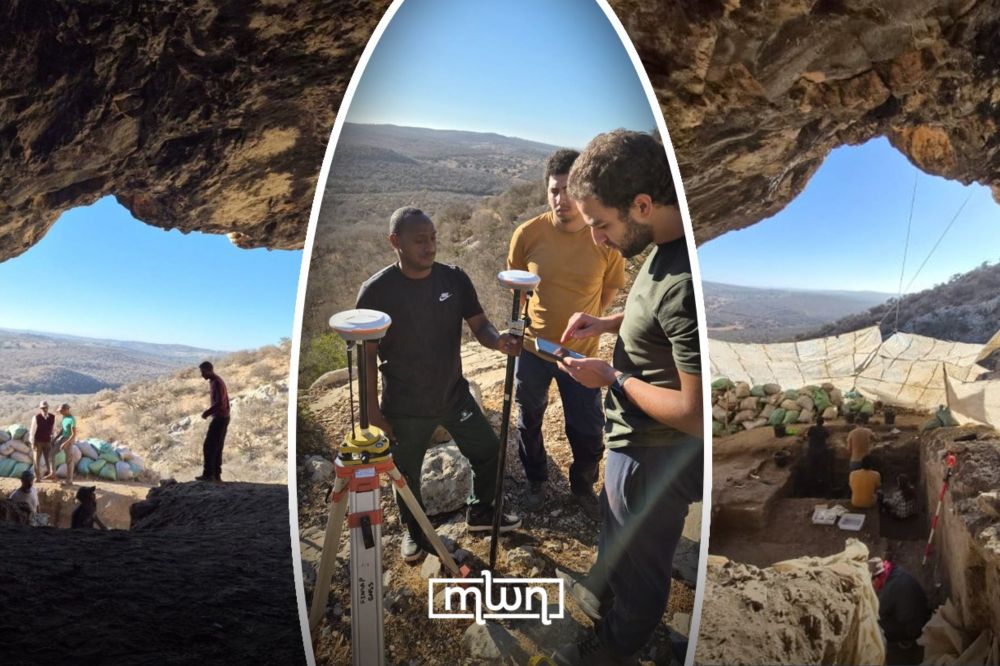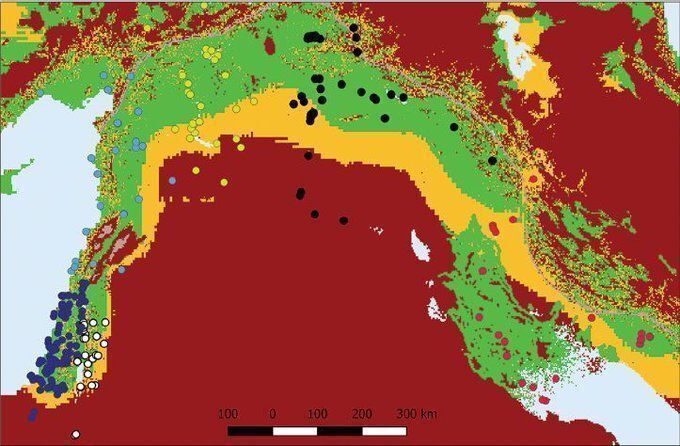
Check out our new study, just published in Scientific Reports - @natureportfolio.nature.com!
We provide the strongest evidence to date for a highly selective cannibalism at the end of Neandertal lineage, 41-45.000 years ago.
1/7

Check out our new study, just published in Scientific Reports - @natureportfolio.nature.com!
We provide the strongest evidence to date for a highly selective cannibalism at the end of Neandertal lineage, 41-45.000 years ago.
1/7
Here's a mini #AntiquityThread on some of the fantastic #archaeology research published in Antiquity this year that applied this now-indispensable tool 1/6 🧵
🏺

Here's a mini #AntiquityThread on some of the fantastic #archaeology research published in Antiquity this year that applied this now-indispensable tool 1/6 🧵
🏺
news.artnet.com/art-world/ne...
🏺

news.artnet.com/art-world/ne...
🏺
www.moroccoworldnews.com/2025/11/2677...
🏺

www.moroccoworldnews.com/2025/11/2677...
🏺
🏺 #Archaeology

🏺 #Archaeology
🆓 doi.org/10.15184/aqy...
🏺 #Archaeology

🆓 doi.org/10.15184/aqy...
🏺 #Archaeology
1/4
#Archaeology #Detecting 🏺
finds.org.uk/database/art...
1/4
#Archaeology #Detecting 🏺
finds.org.uk/database/art...
Get in touch for a chat or even a tour of the department with me.
@uclarchaeology.bsky.social #PaPa
🏺🦣🧪

Get in touch for a chat or even a tour of the department with me.
@uclarchaeology.bsky.social #PaPa
🏺🦣🧪

2 doggy papers are so much better than 1. Both studies a testament to slow science & international collaboration between brilliant people. What it's all about.
www.science.org/doi/10.1126/...
www.science.org/doi/10.1126/...

🏺🎮
🏺🎮

www.sciencedirect.com/science/arti...

www.sciencedirect.com/science/arti...
communities.springernature.com/posts/making...

communities.springernature.com/posts/making...
Variation in their forms suggest some of the combatants came from many kilometres away, adding to evidence for a clash between local and incoming groups.
🔗 from 2024 🆓 doi.org/10.15184/aqy...
🏺 #Archaeology

Variation in their forms suggest some of the combatants came from many kilometres away, adding to evidence for a clash between local and incoming groups.
🔗 from 2024 🆓 doi.org/10.15184/aqy...
🏺 #Archaeology
me not to waste my time with satellite imagery analysis. Now, it's used by everyone. Tremendous use case here. 🏺
🆓 doi.org/10.15184/aqy...
🏺 #Archaeology

me not to waste my time with satellite imagery analysis. Now, it's used by everyone. Tremendous use case here. 🏺
#Zooarchaeology shows they were reliant on rural satellite settlements to support increasingly large and diverse urban populations #WorldUrbanismDay
🆓 doi.org/10.15184/aqy...
🏺 #Archaeology

#Zooarchaeology shows they were reliant on rural satellite settlements to support increasingly large and diverse urban populations #WorldUrbanismDay
🆓 doi.org/10.15184/aqy...
🏺 #Archaeology
international.au.dk/about/profil...

international.au.dk/about/profil...
We have 80 unmatched teams. We’ve already matched 650 😵💫
If you know any archaeologists, please send them here www.skypeascientist.com/sign-up.html
We have 80 unmatched teams. We’ve already matched 650 😵💫
If you know any archaeologists, please send them here www.skypeascientist.com/sign-up.html
Over 30 positions at the National Geographic Society!

Over 30 positions at the National Geographic Society!
🆓 doi.org/10.15184/aqy...
🏺 #Archaeology
🆓 doi.org/10.15184/aqy...
🏺 #Archaeology
Excavation at the c. AD 1456–1661 Yoruba town of Orile-Owu, Nigeria sheds light on diet, food processing, medicinal practices and daily routines during a period of sociopolitical change.
🆓 doi.org/10.15184/aqy...
🏺 #Archaeology

Excavation at the c. AD 1456–1661 Yoruba town of Orile-Owu, Nigeria sheds light on diet, food processing, medicinal practices and daily routines during a period of sociopolitical change.
🆓 doi.org/10.15184/aqy...
🏺 #Archaeology




